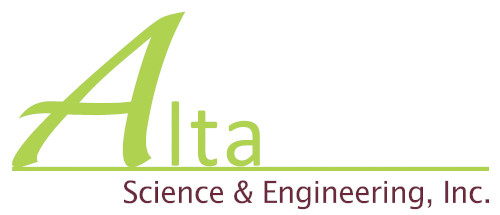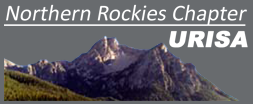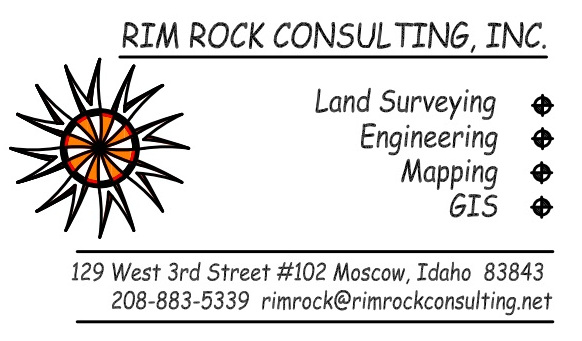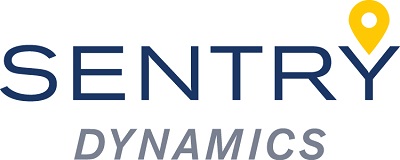GIS Day @ University of Idaho
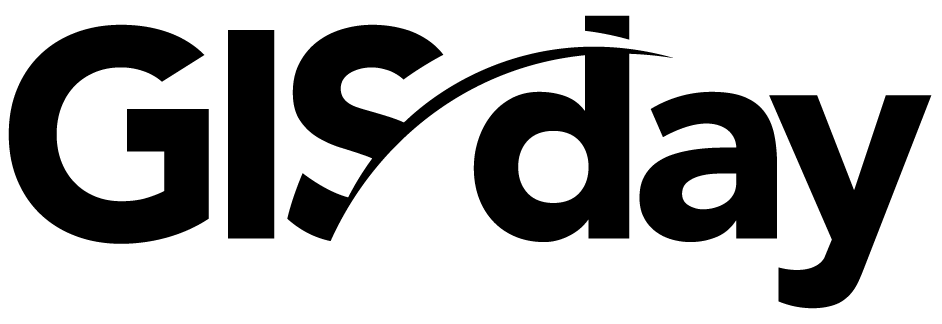
GeoAI: Where Artificial and Location Intelligence Meet
November 15, 2023
Clearwater Room (and Online!)
Idaho Student Union Building
University of Idaho
Moscow, Idaho
This year’s GIS Day is complete, check back fall 2024 for our next event! Content from past years’ presentations, posters, and exhibits can be found in the Repository page.
GIS Day @ University of Idaho is a free event that brings together scholars, students, professionals, businesses, and the public to discuss geospatial technologies and demonstrate their many uses. This year's theme is GeoAI: Where Artificial and Location Intelligence Meet, featuring keynote speaker Dr. Wenwen Li (ASU) to explore this vital topic. The sessions will take place on Wednesday, Nov 15th, 2023 as a hybrid event hosted at Clearwater / Whitewater room of the Idaho Student Union Building and streaming live via Zoom.
Please contact Bruce Godfrey (bgodfrey@uidaho.edu) with any questions.
2023 Keynote Presentation
Wenwen Li
School of Geographical Sciences and Urban Planning
Arizona State University
GeoAI for Science and the Science of GeoAI
AI, especially deep learning, has transformed many science and engineering disciplines because of its outstanding capabilities in learning and extracting new patterns and knowledge in a data-driven manner. Geospatial science is an ideal domain to extensively apply and further boost AI research because of its vast availability of diverse big data, intriguing and complex human-environmental interactions, as well as its central role in enabling location-based analysis. In less than a decade, we have witnessed a rapidly growing interest and progress of GeoAI research -- the transdisciplinary expansion of AI in geography and its sibling domains in spatial, environmental, and urban sciences. This talk will explore the trending research in GeoAI and discuss how the science of GeoAI can be advanced. It will also cover how GeoAI can advance scientific discovery, using the tracking of Arctic environmental change as a use study.
Presenter Bio
Wenwen Li is a Professor in the School of Geographical Sciences and Urban Planning at Arizona State University. Her research interest is geographic information science with a focus on developing integrated and smart cyberinfrastructure to revolutionize knowledge discovery in environmental and social sciences. In recent years, she has been pioneering the integration of AI with geospatial sciences, and have developed a series of spatial explicit GeoAI models for environmental analysis. Dr. Li's research was funded by multiple funding agencies. She was the recipient of the US National Science Foundation's early CAREER Award and Mid-Career Advancement Award. She is also a Fellow of the American Association of Geography (AAG) and a Fellow of University Consortium of Geographic Information Science.
Schedule of Events
GIS Day @ U of I 2023 is a hybrid event taking place on November 15th in the Clearwater / Whitewater room (on the second floor of the Idaho Student Union Building) and live streaming via Zoom. Times are given in Pacific Time (PST). Please register to receive the Zoom link.
Wednesday, Nov 15th, 2023
Full Schedule TBA! Draft schedule is subject to change.
Whitewater Room and Zoom
GeoAI for Science and the Science of GeoAI
Wenwen Li (School of Geographical Sciences and Urban Planning, Arizona State University)Presenting virtually
Keynote presentation
AI, especially deep learning, has transformed many science and engineering disciplines because of its outstanding capabilities in learning and extracting new patterns and knowledge in a data-driven manner. Geospatial science is an ideal domain to extensively apply and further boost AI research because of its vast availability of diverse big data, intriguing and complex human-environmental interactions, as well as its central role in enabling location-based analysis. In less than a decade, we have witnessed a rapidly growing interest and progress of GeoAI research – the transdisciplinary expansion of AI in geography and its sibling domains in spatial, environmental, and urban sciences. This talk will explore the trending research in GeoAI and discuss how the science of GeoAI can be advanced. It will also cover how GeoAI can advance scientific discovery, using the tracking of Arctic environmental change as a use study.
Presenter Bio
Wenwen Li is a Professor in the School of Geographical Sciences and Urban Planning at Arizona State University. Her research interest is geographic information science with a focus on developing integrated and smart cyberinfrastructure to revolutionize knowledge discovery in environmental and social sciences. In recent years, she has been pioneering the integration of AI with geospatial sciences, and have developed a series of spatial explicit GeoAI models for environmental analysis. Dr. Li’s research was funded by multiple funding agencies. She was the recipient of the US National Science Foundation’s early CAREER Award and Mid-Career Advancement Award. She is also a Fellow of the American Association of Geography (AAG) and a Fellow of University Consortium of Geographic Information Science.
Moderators: Bruce Godfrey and Lisa Jones
Whitewater Room and Zoom
Short Talks - Morning
Abhinav Shrestha (Earth and Spatial Sciences); Ryan Town (Earth and Spatial Sciences); Eric Wing (Northwest GIS Users Group)Ten minute presentations highlighting recent geospatial-related work
Presenters from across the geospatial, GIS, and drone community will give 10-minute presentations highlighting their recent work.
- Evaluating the combination of reflectances and three-dimensional point cloud from drone imagery for detecting forest insect damage, Abhinav Shrestha (Earth and Spatial Sciences, University of Idaho) – presenting a novel approach of classifying the multispectral reflectances of point cloud (from drone-captured imagery) into damaged and healthy classes, retaining the height information for later assessment of the vertical distribution of damage within a tree. The results from this study demonstrate the utility of drone data for monitoring the vertical structure of tree damage from forest insects and diseases.
- Improving streamflow prediction using satellite and in situ observations in the snake river basin, Ryan Town (Earth and Spatial Sciences, University of Idaho) – This project, focused on the Snake River Basin, seeks to improve streamflow modeling by testing and characterizing the effects of soil and vegetation parameters on the Noah-MP model, a widely-used and highly-advanced land surface model developed by the National Center for Atmospheric Research. Our research combines in-situ and remotely-sensed data with spatial data analysis, classic hydrological methods, and cutting-edge modeling techniques and hardware such as Idaho’s Falcon supercomputer in pursuit of meaningful contributions to the work of understanding our changing climate and the impacts it will have on the future of our human and natural ecosystems.
- Northwest GIS Users Group - Community and Opportunity, Eric Wing (Northwest GIS Users Group) – Introduction to the Northwest GIS Users Group from the president! NWGIS is a Pacific-Northwest focused GIS community. The group provides conference, training, and networking opportunities. We are currently implementing experience opportunities aimed at young professionals.
Moderators: Lisa Jones and Tyler Rodrigues.
Whitewater Room and Zoom
Revolutionizing Disaster Response: Unleashing the Power of GeoAI and Big Sensor Data
Qunying Huang (Spatial Computing and Data Mining Lab, University of Wisconsin-Madison)Invited special topics presentation
The emergence of real-time voluminous data streams stemming from a multitude of physical and social sensors, including remote sensing, unmanned aerial systems, and social media, presents compelling opportunities for the comprehensive characterization of disaster scenarios, the development of innovative methods for damage assessment, and the facilitation of timely and informed decision-making in the face of natural calamities. Meanwhile, recent advances in artificial intelligence (AI), particularly deep learning (DL), have ushered in a new era of geospatial AI (GeoAI) applications with the capacity to quickly and accurately extract valuable insights from extensive geospatial datasets, approximating human-like cognition. The synthesis of big data and GeoAI holds the potential to rapidly establish situational awareness, thereby enhancing operational efficiencies and responsiveness in disaster response efforts. In light of these advancements, this talk delves into the multifaceted challenges, innovative solutions, and practical applications that synthesize big sensor data and GeoAI to extract vital information for guiding decision-making in the context of natural disasters.
Qunying Huang is an Associate Professor in the department of Geography at University of Wisconsin-Madison and leads the Spatial Computing and Data Mining Lab.
Whitewater Room
Lunch
Whitewater Room and Zoom
Short Talks - Afternoon One
Jean-Marc Gauthier (Virtual Technology and Design) and F.B. Wróblewski (Earth and Spatial Sciences); Jean-Marc Gauthier, Payton Finney, Sydney Tverdy (Virtual Technology and Design), and Heather Heward (Forest Rangeland and Fire Sciences); Jason Starace and Nate Summers (Computer Science); Wendy Largent (NR URISA)Ten minute presentations highlighting recent geospatial-related work
Presenters from across the geospatial, GIS, and drone community will give 10-minute presentations highlighting their recent work.
- Augmenting Virtual Lunar Terrain with Procedural and Machine Learning Models in Real-time, Jean-Marc Gauthier (Virtual Technology and Design, University of Idaho) and F.B. Wróblewski (Earth and Spatial Sciences, University of Idaho) – NASA plans to send multiple crewed missions to the Lunar South Pole through the Artemis program. We propose to build visual and mathematical models of three candidate Artemis landing sites at the Moon’s south polar region with the goal of producing real-time visual and geographical 3D environments to assist in Artemis mission planning. We propose to use two pipelines to develop a fine-scale virtual landscape at higher visual and scientific resolutions than current satellite data to prepare landing sites, mission traverses, and training of the Artemis mission’s astronaut and personnel. We propose to use 1) geologic mapping and machine learning classification of craters and rocks to generate the virtual lunar surface with geological and cartographic information and 2) procedural content generation within Adobe Substance and Unreal Engine to build the virtual 3D environment.
- A Virtual Forest for Experiential Learning - VR Classroom project, Jean-Marc Gauthier, Payton Finney, Sydney Tverdy (Virtual Technology and Design, University of Idaho), and Heather Heward (Forest Rangeland and Fire Sciences, University of Idaho) – Using UIEF Lidar point cloud survey files, we recreate a virtual forest with healthy trees, burned, or dead trees. The team created and designed a procedural generated content system (PGC) using Artificial Intelligence and Machine Learning to recreate the virtual trees, ground, and ground cover for the virtual forest.
- A twin like no other, rebuilding the IRIC in Unreal Engine 5, Jason Starace and Nate Summers (Computer Science, University of Idaho) – Using GIS data, the Esri suite of tools, and Unreal Engine 5 to accurately represent the U of I campus and the IRIC building. In this environment, we plan to make a digital twin of the Assistive Robotics lab and share our work so that others may create their own twins. Under the guidance of Dr. Conte de Leon.
- Northern Rockies URISA 2024 Intermountain GIS Conference, Wendy Largent (Northern Lights, Inc.) – updates and announcement for the Intermountain GIS conference!
Moderators: .
Whitewater Room and Zoom
Short Talks - Afternoon Two
Jason Karl (Rangeland Ecology); Adam Carlson (Earth and Spatial Sciences)Ten minute presentations highlighting recent geospatial-related work
Presenters from across the geospatial, GIS, and drone community will give 10-minute presentations highlighting their recent work.
- Finding the where of scholarly publishing: automating scientific article geolocation, Jason Karl (Rangeland Ecology, University of Idaho) – Geographic-based searching for scientific literature can improve knowledge discovery, relevance, and transfer. However, because most articles use place-name descriptions of study areas, there are significant challenges in efficiently building geolocated literature databases. Recent advances in AI tools (e.g., Large Language Models like ChatGPT) offer new approaches to automating article geolocation.
- Accessibility to Emergency Food Services using Public Transportation, in Seattle Washington, Adam Carlson (Earth and Spatial Sciences, University of Idaho) – In this study, we examine the current accessibility of food banks using public transportation to identify ways to help improve access to food resources for those who deal with food insecurity. To conduct this study, Seattle, WA was chosen as the study area, which we observed using general transit feed specification (GTFS) and ArcGIS to measure the time from accessible food services to the public transportation network of Seattle.
Moderators: Kelly Omodt
Whitewater Room and Zoom
Land Change Analysis Tool (LCAT)
Phil Roberts (USDA)Invited special topics presentation
In 2018, FPAC Geo developed the Land Change Analysis Tool (LCAT) to create high resolution landcover maps utilizing Artificial intelligence (AI) and machine learning technology. The team employs several geospatial and spatial data analysis tools using GIS software, scalable computation platforms, and geospatial scripting. For each state, a sampling strategy is developed by consulting local experts. Training datasets are generated by leveraging “crowdsourcing” throughout the GEO organization, USDA, and academia with a web-application. Imagery is then classified using a machine learning algorithm that models landcover based on the training datasets. Resulting maps are published and available for download internally and to the public.
Our internal partners have been the primary drivers for this product but development of a nationwide high resolution landcover dataset is streamlining and enabling other agencies to explore innovative conservation and land management projects that save time and money. Expanding partnerships with internal and external groups creates a pipeline for talent while discovering new uses and applications for this dataset. Ultimately this high-resolution land cover product will be updated regularly as new NAIP imagery is acquired at 60, 30, & 15cm.
Phil Roberts is the Remote Sensing Coordinator at FPAC GEO (USDA).
Registration
To participate in GIS Day 2023, please register in advance to let us know if you will be attending in person or online. Visit the event registration link and fill in the form with your details. Information about how to join the sessions will be emailed to you a day before the event. Registration is free and open to all.
Sponsors
Each year a variety of entities generously provide financial contributions to help make this a successful event. The current list recognizes our supporters.
If you or your organization would like to become a sponsor of GIS Day at the University of Idaho please click the button above to learn how to make a donation.
Planning Committee Members
- Bruce Godfrey - Chair (Library)
- Lisa Jones (Plant Science)
- Jason Karl (Forest, Rangeland, and Fire Sciences)
- Jylisa Kenyon (Library)
- Felix Liao (Earth & Spatial Sciences)
- Evan Williamson (Library)
![University of Idaho Library [logo]](https://www.lib.uidaho.edu/media/images/ui_library_horizontal.png)

